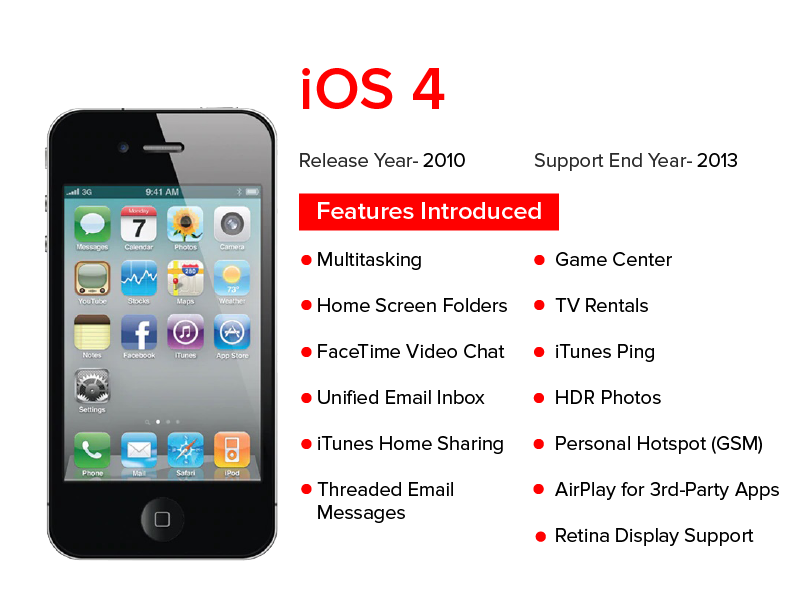The journey of iOS, Apple’s mobile operating system, has been a captivating tale of innovation and transformation. From the groundbreaking release of the original iPhone to the latest advancements in iOS, this exploration traces the evolution of the operating system that has shaped the landscape of modern mobile technology.
Chapter 1: The Birth of iOS with the Original iPhone (2007)
1.1 Introduction to the Original iPhone:
– Overview of the first iPhone and its revolutionary design
– Introduction of the touch-based interface and the absence of a physical keyboard
1.2 iOS 1.0:
– Features and capabilities of the inaugural iOS version
– App Store inception and the introduction of third-party apps
Chapter 2: iOS 2.0 to 4.0 (2008-2010)
2.1 App Store Expansion:
– Growth of the App Store and the introduction of diverse applications
– App Store milestones and developer ecosystem
2.2 Push Notifications and Copy-Paste:
– Implementation of push notifications in iOS 3.0
– Introduction of copy-paste functionality in iOS 3.0
2.3 Multitasking in iOS 4.0:
– The introduction of multitasking capabilities
– Fast app switching and background processes
Chapter 3: iOS 5.0 to 7.0 (2011-2013)
3.1 Siri and iCloud:
– Debut of Siri, the voice-activated virtual assistant
– Introduction of iCloud for seamless data synchronization
3.2 Notification Center and Control Center:
– Implementation of the Notification Center for streamlined notifications
– Introduction of Control Center for quick access to settings
3.3 Redesigned User Interface in iOS 7.0:
– The radical overhaul of the iOS design with a flatter and more minimalist aesthetic
– Introduction of dynamic icons, parallax effects, and the Control Center
Chapter 4: iOS 8.0 to 10.0 (2014-2016)
4.1 Extensibility and Continuity:
– Introduction of app extensions for enhanced functionality
– Continuity features for seamless integration across Apple devices
4.2 HealthKit and HomeKit:
– Debut of HealthKit for health and fitness data integration
– Introduction of HomeKit for smart home device management
4.3 iOS 9’s iPad Multitasking:
– Split View and Slide Over features for multitasking on iPad
– Picture-in-Picture mode for video playback
Chapter 5: iOS 11.0 to 13.0 (2017-2019)
5.1 Augmented Reality with ARKit:
– Introduction of ARKit for augmented reality experiences
– Integration of AR features in various apps and games
5.2 Redesigned App Store and Files App:
– Overhaul of the App Store layout for improved app discovery
– Introduction of the Files app for better file management
5.3 Dark Mode and Privacy Features in iOS 13.0:
– Introduction of system-wide Dark Mode for reduced eye strain
– Enhanced privacy features, including Sign in with Apple
Chapter 6: iOS 14.0 to 15.0 (2020-Present)
6.1 App Library and Home Screen Widgets:
– Introduction of the App Library for organized app categorization
– Widgets on the home screen for customizable information at a glance
6.2 App Clips and Privacy Nutrition Labels:
– App Clips for quick access to specific app functionalities
– Privacy Nutrition Labels for transparent app data usage information
6.3 Focus Mode and FaceTime Enhancements:
– Introduction of Focus Mode for tailored notification management
– FaceTime improvements, including spatial audio and SharePlay
Conclusion:
The evolution of iOS has been marked by a continuous commitment to innovation, user experience, and seamless integration across Apple’s ecosystem. From the groundbreaking release of the original iPhone to the latest features introduced in iOS 15.0, the operating system has played a pivotal role in shaping the landscape of modern mobile technology. As Apple continues to push the boundaries of innovation, the journey of iOS is sure to unfold with new advancements and features in the years to come.








